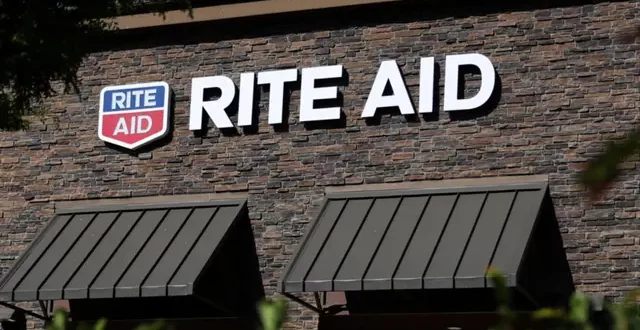Rite Aid filed for Chapter 11 bankruptcy protection as the company struggled with its business and multiple lawsuits alleging the pharmacy chain’s responsibility for the opioid crisis across the United States.
The company filed for bankruptcy protection in New Jersey on Oct. 15 and announced that it would begin a restructuring plan that speeds up its “transformation and long-term success.”
In a court filing with the U.S. Bankruptcy Court for the District of New Jersey, Rite Aid listed estimated assets and liabilities from $1 billion to $10 billion, according to Reuters.
The company said it reached a deal with lenders for a restructuring plan that significantly reduces its debts, helping its financial flexibility.
Under the agreement secured with creditors, the drug store chain will be given $3.45 billion, providing sufficient liquidity for its restructuring initiative. In exchange, Rite Aid has to optimize its store footprint and resolve lawsuits, among other measures.
“Rite Aid is continuing to deliver leading health care products and services across its retail and online platforms for the nearly one million customers it serves daily,” the company announced in a press release, adding that it “remains committed to improving health outcomes and delivering on its purpose to help people achieve whole health for life.”
The Rite Aid bankruptcy comes as expected. The embattled pharmacy chain has been facing sluggish sales, mounting debts, and lawsuits accusing it of oversupplying painkillers.
The company filed a notice to the U.S. Securities and Exchange Commission on Oct. 12, saying it failed to file a quarterly report as it “reviewed strategic alternatives” to optimize its capital structure.
In its second quarter, the company’s revenue dropped to $5.6 billion, down from $6.1 billion in the first quarter. Net losses reached $307 million, compared with $241 million in the first quarter.
Rite Aid, one of the biggest in the country, operates more than 2,000 retail stores with 6,100 pharmacists across 17 states in the United States.
On Oct. 15, the company also announced a leadership change, appointing Jeffrey S. Stein as the new chief executive officer, chief restructuring officer, and a board member. He replaces Elizabeth Burr, interim CEO, who will stay on the company’s board.
Bruce Bodaken, Rite Aid chairman, said in a statement, “Jeff is a proven leader with a strong track record of guiding companies through financial restructurings. We look forward to benefiting from his contributions and leveraging his expertise as we strengthen Rite Aid’s foundation and position the business for long-term success.”
Mr. Stein said he prioritized enhancing Rite Aid’s financial position with “tremendous confidence in this business and the turnaround strategy that has been developed in recent months.”
Rite Aid has faced tough competition from its virals like CVS, Walgreens, and Amazon as those companies switched to focus on the health care business and heavily invested in this business model.
In 2017, Rite Aid failed to merge with Walgreens due to antitrust concerns from the Federal Trade Commission, as the commission feared that combining the country’s two biggest pharmacy chains could lead to monopoly.
Earlier this year, the Justice Department filed a lawsuit against the company, alleging the drugstore chain “knowingly filled at least hundreds of thousands of unlawful prescriptions for controlled substances,” which violates the False Claims Act and Controlled Substances Act.
Pharmacy chains like Walgreens and CVS have also faced similar lawsuits in recent years. The two drugstore chains reached settlements for $10.7 billion with multiple states late last year.
According to the Centers for Disease Control and Prevention, about 71,000 people died in the United States from overdose involving synthetic opioids in 2021, with an overdose death rate nearly 22 times higher than in 2013.
From 1999–2021, the number of opioid overdose deaths, which include both prescription and illicit opioids, reached nearly 645,000. An analysis found that the opioid epidemic cost the United States nearly $1.5 trillion in 2020.
 Speedinews Spreading Daily News With Speed
Speedinews Spreading Daily News With Speed




